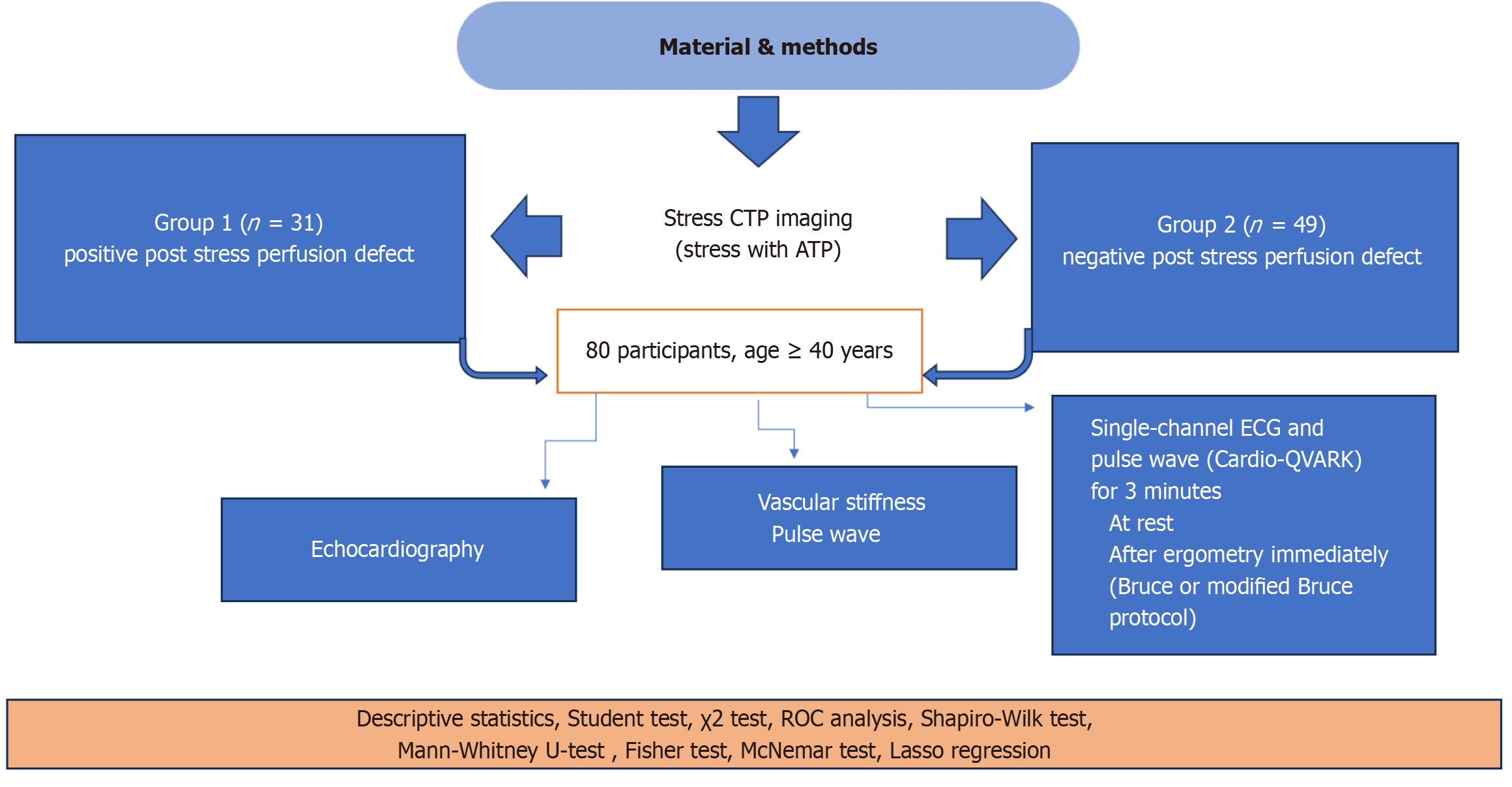Copyright
©The Author(s) 2025.
World J Cardiol. Apr 26, 2025; 17(4): 104396
Published online Apr 26, 2025. doi: 10.4330/wjc.v17.i4.104396
Published online Apr 26, 2025. doi: 10.4330/wjc.v17.i4.104396
Figure 1 Presentation of the study.
Single-lead electrocardiography using Cardio-Qvark is performed at rest. Subsequently, participants perform exercise via bicycle ergometry (on SCHILLER device c 200; Bruce protocol or modified Bruce protocol). Immediately after bicycle ergometry, Cardio-Qvark is performed again while sitting. CTP: Computed tomography myocardial perfusion; ECG: Electrocardiography; ROC: Receiver operating characteristic.
Figure 2 Diagnostic accuracy of the load test and the built model.
There was no statistical significance, but the model had better predictive properties, P = 0.337. AUC: Area under the receiver operating characteristic curve.
- Citation: Marzoog BA, Chomakhidze P, Gognieva D, Silantyev A, Suvorov A, Abdullaev M, Mozzhukhina N, Filippova DA, Kostin SV, Kolpashnikova M, Ershova N, Ushakov N, Mesitskaya D, Kopylov P. Development and validation of a machine learning model for diagnosis of ischemic heart disease using single-lead electrocardiogram parameters. World J Cardiol 2025; 17(4): 104396
- URL: https://www.wjgnet.com/1949-8462/full/v17/i4/104396.htm
- DOI: https://dx.doi.org/10.4330/wjc.v17.i4.104396














